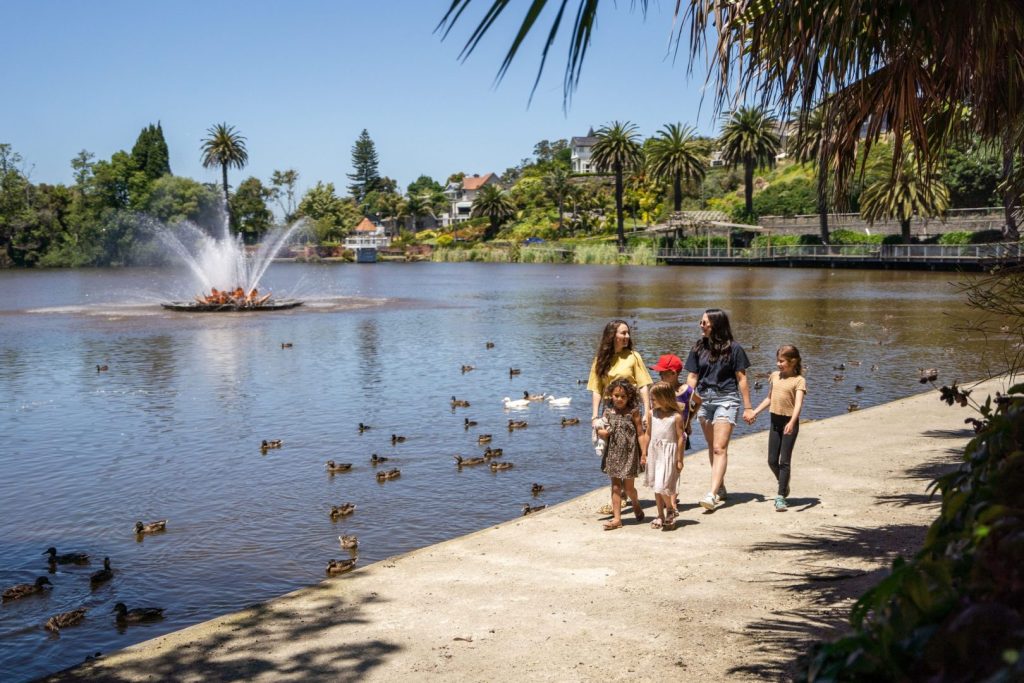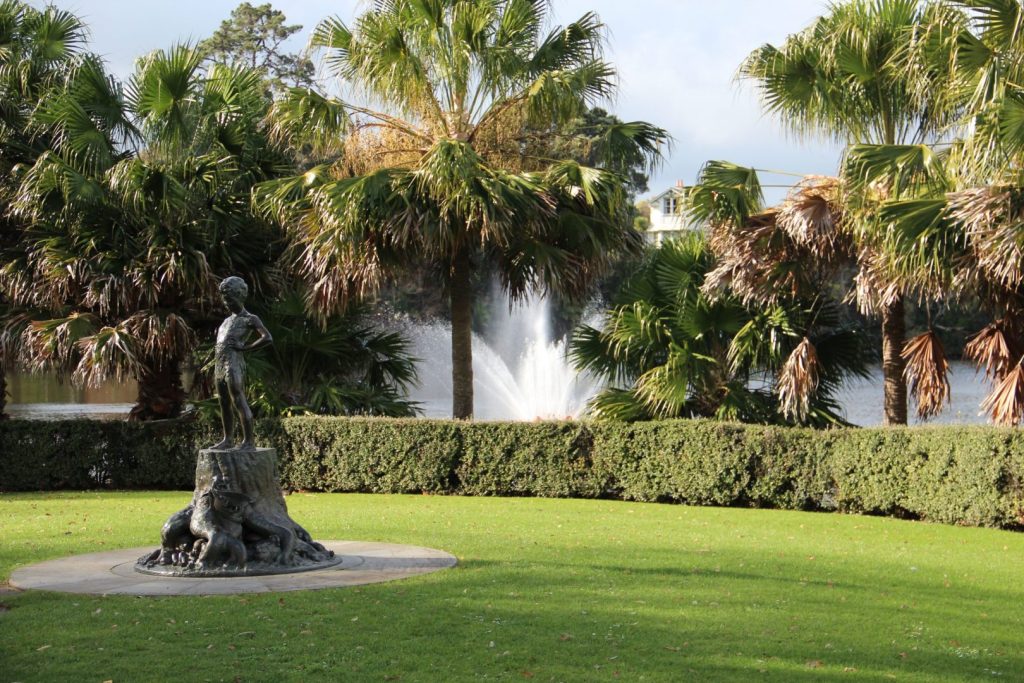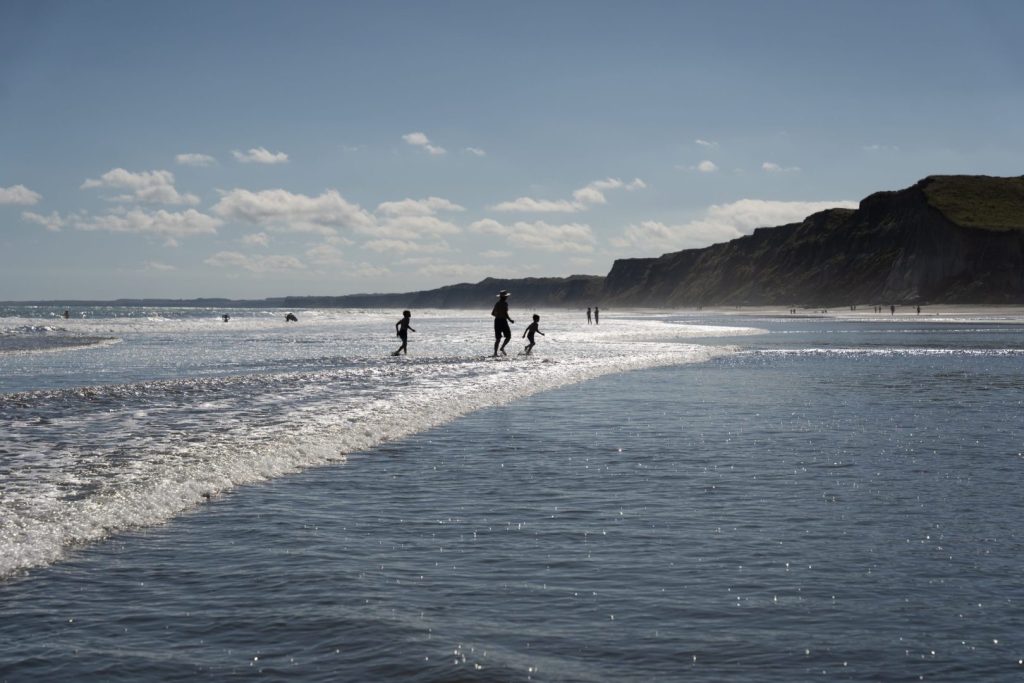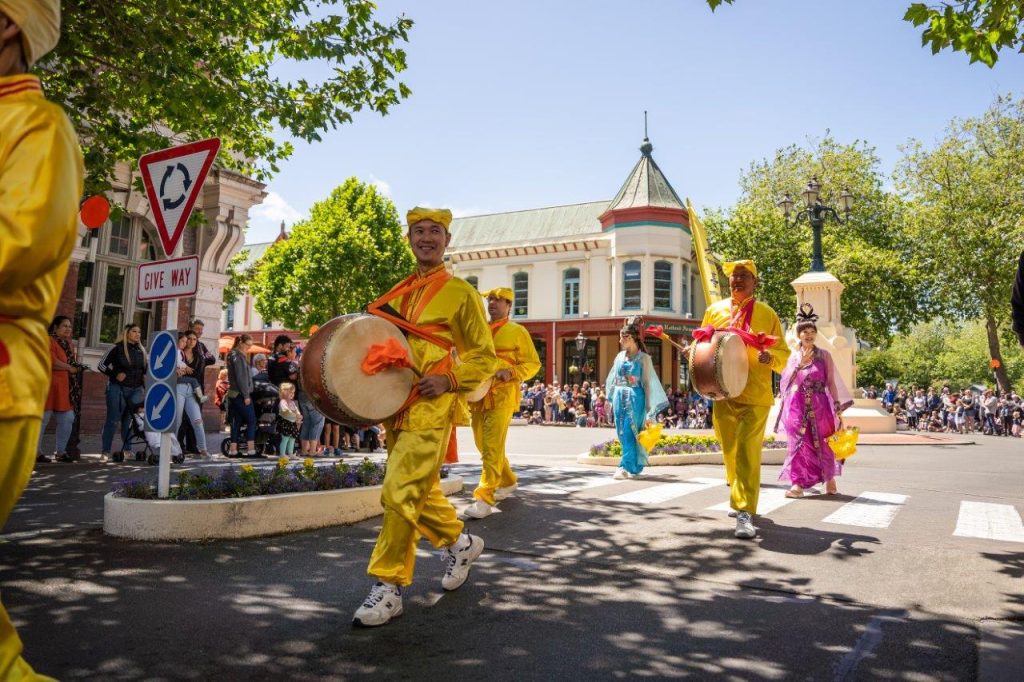Lifestyle
Nau mai, haere mai.
Join our diverse and friendly community.
Whatever your passion, Whanganui offers the perfect lifestyle fit. Families thrive in this place of culture, creativity and adventure. Public facilities support people of all ages and interests with excellent infrastructure and connectivity.
Working from home is the perfect choice for many, while for others Whanganui’s size makes it a commuter’s dream.
Support for economic development allows entrepreneurs to flourish, and daily connections to New Zealand’s biggest cities enable an ideal lifestyle without compromise.

Local History
With more than 40 generations of settlement by Māori, and European settlement since 1840, Whanganui’s history has hundreds of years worth of stories of interest.
The Whanganui River catchment is regarded as a sacred area to Māori with the river and settlements holding a special place for Māori and European settlers alike.
Originally known as Petre, the town was established 4km from the river mouth in 1840. The official name change to Wanganui took place on 20 January, 1854. The city’s spelling has now been corrected to Whanganui, which in te reo Māori can be interpreted as ”big bay or big harbour”. Declared a city in 1924, it was New Zealand’s fifth-largest, until 1936.
The history of Whanganui is a rich amalgam of all settler and Māori cultures with the Whanganui River central to historic, cultural and artistic development. The river (Te Awa O Whanganui) has provided inspiration and is the essential heartbeat for oral, visual and written creative expression over many centuries.
Māori History of Whanganui
“E rere kau mai te Āwanui,
Mai i te Kāhui maunga ki Tangaroa
Kō au te Āwa, kō te Āwa kō au.”“The great river flows From the mountains to the sea.
I am the river, the river is me.”
This whakataukī (proverb) defines the Iwi (Māori) of the Whanganui River and region. From the sacred mountains of the Central Plateau, the Whanganui River begins its journey of nearly 300km and is eventually released into the Tasman Sea, off the western coastline of Whanganui. Along its length the people of Te Ātihaunui-a-Papārangi (Whanganui Iwi) have descended for over 40 generations.
Throughout time, custodianship of the river has been bestowed upon the descendants of three sibling ancestors, the female, Hinengākau, assigned the top reaches near Taumarunui, the eldest sibling, the male Tamaūpoko, the middle reaches, and Tūpoho, the younger sibling, the lower reaches.
Our district boundaries fall across the ancestral boundaries of Tamaūpoko and Tūpoho on the river, the South Taranaki Iwi, Ngā Rauru Kītahi and Ngāti Āpa of the Rangitīkei. Customs, tikanga (protocol) and values including manaakitanga (hospitality) and kaitiakitanga (guardianship) emphasise the affinity of Māori with their ancestral landscapes and culture.
Heritage
From Māori art, craft and carvings, historic Māori buildings and colonial churches to the Victorian and Edwardian buildings, Whanganui is a heritage city providing much to explore.
Whanganui Early European Settler History
Negotiation for purchase of land with Whanganui Māori started as early as 1840 and was finalised in 1848 when 80,000 acres were purchased. In 1841, the first settlers from England, Scotland and Ireland arrived in Whanganui. Many had already bought land from the New Zealand Company but until land sale issues were resolved most settlers were confined to town.
Tensions between Māori and settlers saw the installation of a military garrison in 1846 and for the next 15 years the 65th Regiment of the Imperial British Army was in residence. Other regiments followed with the last, the 18th (Royal Irish), leaving in early 1870.
In 1843 Anglican missionary Richard Taylor recorded 3,240 Māori living in the Whanganui River valley and 205 settlers living in town with about a dozen families living outside the town boundary. Taylor served the Whanganui Mission from 1843 for the remainder of his life. With total dedication, he was an ardent family man and with an intense interest in scientific matters. Richard Taylor was the forerunner of many others who came to serve the communities of Whanganui.
By the early 1900s business in Whanganui was booming. The Whanganui River tourist trade took off, with thousands of passengers being transported on Alexander Hatrick’s riverboat fleet. Hatrick made the river accessible to everybody: rich tourists, farmers in the interior and Whanganui citizens.
Whanganui thrived as it serviced a huge fertile agricultural catchment area, rearing sheep and cattle, as well as growing barley, wheat, oats, maize, fruit and timber.
Seven kilometres upstream from the river mouth, the town was developed and wharves established. Most coastal shipping berthed just downstream from the present town bridge. The Whanganui town wharf was the centre of activity until 1908 when Castlecliff Port was developed around the frozen meat trade. The town wharf closed in 1956 as it was uneconomic to operate both ports.
Public Safety
Dial 111 in Emergencies
In New Zealand, the number to call if you need Fire, Police or an ambulance in an emergency is 111. Calling 111 is free. You can call this number from a mobile phone, even if you have no credit left. The operator will ask you which service you need and connect you to the right one.
You can call 111 in emergencies such as:
- fire
- medical emergency
- someone is badly injured or in danger
- a serious risk to life or property
- a crime is being committed and the offenders are still there or have just left
- you have come across a major public disruption, like trees blocking a road
- a dangerous situation is happening now or has just happened.
Getting help if it is not an emergency
- If it is not an emergency and you want to report it to the Police, you can call them on 105.
- To report a minor traffic incident, you can call *555 from your mobile phone.
- If it is a medical issue and you need to see a doctor, call your family doctor (GP) or after hours medical clinic.
- If it is a medical issue and you just need advice, call Healthline on 0800 611 116.
Health
Whanganui Hospital
Te Whatu Ora Whanganui oversees the Whanganui Hospital at 100 Heads Road, Whanganui 4501.
A list of departments and wards can be found here Our departments and wards — Te Whatu Ora Whanganui – Whanganui District Health Board (wdhb.org.nz)
For patient or general enquiries, call 06 348 1234.
General Practitioner (GP)
For day-to-day healthcare, it is recommended you register with a GP. Most practices are currently at capacity, but some are enrolling people new to Whanganui and those with no existing local GP. Visit www.wdhb.org. nz and click on the ‘Your Health’ tab for contact information on General Practices and Midwives.
After-hours Accident and Medical Care
The Whanganui Accident & Medical (WAM) clinic is located in the Whanganui Hospital next to the Emergency Department and focuses on assessment and treatment of accidents and injuries, as well as providing afterhours general medical care. Open seven days, 8.00am to 9.00pm, including public holidays. No appointment is necessary.
Need to talk?
Free call or text 1737 any time for support from a trained counsellor (service set up by National Telehealth Service).
Police
Whanganui Central Police Station
Open hours: 7.00am – 7.00pm, seven days a week
Physical address: 1D Bell St, Wanganui
Civil Defence – Whanganui
Disasters such as earthquakes, tsunamis, volcanic eruptions, floods and storms can strike at any time, sometimes without warning. All disasters have the potential to cause disruption, damage property and take lives. Many disasters will affect essential services and possibly disrupt your ability to travel or communicate with each other. You may be confined to your home, or forced to evacuate your neighbourhood. In the immediate aftermath of a disaster, emergency services will not be able to get help to everyone as quickly as needed. This is when you are likely to be most vulnerable. So it is important to plan to look after yourself and your loved ones for at least three days or more in the event of a disaster.
Click here for information on how to get ready
Further information:
www.facebook.com/civildefencemanawatuwhanganui
www.facebook.com/whanganuidistrictcouncil
Radio
Whanganui District Council has partnered with Brian FM to ensure essential public information messages are broadcast immediately from the Emergency Operations Centre during emergencies. Listen to the frequencies below, or online at www.brianfm.com
- Brian FM Whanganui – 91.2FM
- ReelWorld Radio Whanganui – 92.0FM
Emergency Mobile Alert
In an emergency, Emergency Mobile Alert messages can be sent to some smartphones by the Ministry of Civil Defence & Emergency Management, Civil Defence Emergency Management Groups, New Zealand Police, Fire and Emergency New Zealand, the Ministry of Health and the Ministry for Primary Industries.
These messages will be sent if life, health or property is in serious danger. If your phone is capable of receiving Emergency Mobile Alerts, the alert should appear automatically on your screen with a unique and penetrating warning sound.
The Emergency Mobile Alert does not replace other information about what to do during an emergency – check out Whanganui District Council and Manawatu-Whanganui Civil Defence Facebook pages and make sure you have a battery or solar powered radio.
Civil Defence Sirens
Electronic warning sirens are stationed along the lower Whanganui River estuary and the Castlecliff coastline, with a separate large siren at Mowhanau. These are primarily to warn of a possible tsunami impact in the Whanganui area. Visit www.whanganui.govt.nz/ civil-defence and look through the section about tsunami to listen to the tsunami siren sound.
The local urban sirens use the exact same sound. Civil Defence sirens are tested on the first Wednesday of each month at 8.30am (except January). If you hear a continuous sounding of the sirens, please tune in to your nearest radio station and listen for information.
Tsunami Evacuation Maps
There are several tsunami information boards and evacuation maps throughout the Whanganui District at coastal or river areas, telling people what to do if a tsunami is generated near our coastline. A detailed digital map of tsunami evacuation areas, evacuation routes and safe zones is available at www. whanganui.govt.nz/tsunamievacuation-map
Family Safety
Family safety concerns everyone in our community and it is everyone’s responsibility.
This is especially important when it comes to issues which can be difficult to talk about such as family violence. Family violence affects people of all ages, all incomes, all cultures and there are many people affected in our community. Family violence affects us all directly or indirectly. Any behaviour that makes someone else feel controlled and fearful is never OK. Everyone in a family should feel safe and nurtured.
Whanganui Family Violence Intervention Network
The Whanganui Family Violence Intervention Network comprises more than 40 statutory, iwi and community organisations actively working to prevent and address the ongoing impacts of violence within our homes, whānau and families.
The purpose of the Whanganui Violence Intervention Network is to:
- Increase awareness of what family violence is and what help is available.
- Develop community-wide understanding and effective helping in response to family violence.
- Strengthen the collaboration of local agencies working with family members.
If you, or someone you know is in danger, phone 111
Agencies offering 24/7 services
- Police – phone 111
- Women’s Refuge – 06 344 2204 or 0800 733 843
Free helplines offering 24/7 services
- For concerns about children’s safety and well-being – 0508 326 459 (Oranga Tamariki).
- Crimestoppers (giving information about crime without revealing your identity) – 0800 555 111
- Rape & Sexual Abuse Crisis support line – 0800 88 33 00 (Safe to Talk – 0800 044 334)
- Shakti (for migrant women) – 0800 742 584
Local support services
- Family Works – 06 345 6681
- Women’s Refuge Whanganui – 06 344 2204
- Rise: Stopping Violence Services – 06 347 7992
- Whanau Ora – 06 349 0007 – Te Oranganui
- Whanganui Police, Bell Street – 06 349 0600
- Jigsaw Whanganui – 06 345 1636
- Age Concern Wanganui – 06 345 1799 or 0800 326 6865
- Whanganui Safe and Free (healing and preventing sexual abuse) – 06 343 3416
- Tupoho (social work services) – 06 345 2042
The following agencies also work in rural Whanganui
- Police
- Women’s Refuge Whanganui
- Jigsaw Whanganui
Free helplines
- Family Violence Information Line – 0800 456 450, any day, 9.00am to 11.00pm
- Shine (confidential domestic abuse helpline) – 0508 744 633 + NZ Relay service (for deaf, hard of hearing, or speech impaired), any day, 9.00am to 11.00pm
- What’s Up Free Helpline – 0800 942 8787 for anyone ages 5 to 18. Monday to Friday, 12.00pm to 11.00pm and Saturday, 3.00pm to 11.00pm.
- See the top of this page for free helplines offering 24/7 services.
Online help for non-urgent help is provided by:
More information
New Zealand Police: How to deal with family violence
Water Safety
Below is some useful information about staying safe while enjoying some of Whanganui’s popular swim spots over the summer months.
Wharf Street boat ramp
This area is generally unsafe for swimming while boats are being launched. Boats are unable to stop suddenly and there is a high risk of serious injury if swimmers become caught in a boat’s propeller wash and are struck by a propeller.
The water level in this part of the river changes very dramatically. Hidden logs and other debris drift into the area and can make swimming hazardous.
Rowing pontoons
Most rowing clubs are OK with swimmers using their pontoons as long as they respect the rowers as they get their boats in and out of the water.
Negotiating swimmers while carrying a heavy boat could result in injury to both swimmer and rower, as well as damage to the boat.
City Bridge
We don’t actively encourage jumping off the City Bridge into the river. However, if you are going to do this please take care. Check the water for obstacles before you jump. This includes logs and debris as well as rowers and other water craft who use the river frequently during summer. Take care as you come up onto the bridge as there is a lot of traffic.
Beaches
We have two patrolled beaches – Castlecliff and Kai Iwi (Mowhanau) beaches. Both beaches are patrolled by Wanganui Surf Lifesaving Lifeguards from 12 noon to 6.00pm each day over the summer. Please swim between the flags and listen to the lifeguards, who are there to keep you safe.
- Information about rip currents
A rip current is outgoing current on a surf beach that can quickly carry swimmers away from the shore. They are a common occurrence on Whanganui’s coastline. Swimmers are advised to avoid swimming in or near a rip current.
A rip is identified by:
- discoloured or murky brown water caused by sand stirred up off the bottom
- a smoother surface with much smaller waves, with waves breaking either side
- debris floating out to sea
- a rippled look, when the water around is generally calm.
Mosquito Point
While enjoying Mosquito Point, please check for debris, such as logs, on the river and monitor swimming conditions, particularly after heavy rain. It is also important to look out for other users to make sure everyone is safe and can enjoy this great swimming spot together.
Have fun at any of our swimming areas in the region, and remember to check the safe swim spots map for up-to-date information about water quality and potential safety risks before heading out.
Public spaces
Cycling & Shared Pathways
The Whanganui District is recognised for its excellent cycling terrain, national accessibility and temperate climate. Whanganui city is home to mountain bike parks, an inner-city bike park and an outdoor velodrome.
The urban area also offers a great network of walking and cycle paths that run alongside the Whanganui River. Marked cycle lanes connect many suburbs, making it easy to cycle safely from home to school or work.
For more information see: https://www.whanganui.govt.nz/Services-Amenities/Cycling-Shared-Pathways
Parks and Amenities
Parks and Reserves
Whanganui has many attractive parks, reserves and open spaces, including Virginia Lake, Kowhai Park, Cooks Gardens and the Bason Botanic Gardens. Numerous small parks and playgrounds are dotted around the neighbourhoods.
For more information see: https://www.whanganui.govt.nz/Services-Amenities/Parks-Reserves

Swimming Pools
Whanganui has two public swimming pools – the indoor Splash Centre facility in Springvale Park and the outdoor Whanganui East Pool.
Both pools have:
- changing and shower rooms, toilets, viewing areas with seating, and a shop
- supervision of swimmers
- swimming and instructional opportunities such as learn to swim classes and aerobics
- swimming aids such as boards, floats and lane markers
- hot showers
For more information see: https://www.whanganui.govt.nz/Services-Amenities/Swimming-Pools
Libraries
Whanganui has public libraries that are open to everyone.
The libraries hold more than 100,000 books, magazines and DVDs, along with eBooks and eMagazines. Free unlimited wi-fi and free-to-use computers are also available.
The libraries run holiday programmes and events throughout the year for children and families.
The locations of the libraries are:
Main Library (Davis Library), Pukenamu Queen’s Park
- Gonville Library, 44 Abbot Street
- Hakeke Street Library, 65 Hakeke Street
- Rangiora Street Library,10 Rangiora Street
- Suzanne Aubert Library, Jerusalem
For more information see: https://www.whanganui.govt.nz/Community-Culture/Libraries
Beaches
Whanganui boasts a range of beaches, from rugged black-sand beaches to those perfect for families, swimming and surfing.
Castlecliff Beach
A short drive from the city centre (just over 10 minutes), this beach is popular for swimming and surfing and is patrolled by lifeguards during summer. There is also a playground and skate park, making it ideal for families. It is also a popular fishing spot.
Kai Iwi Beach (Mowhanau)
A beach for all the family offering swimming, fishing, playground, wood-burning barbecues and a great place for camping. Kai Iwi beach is reached via Rapanui Road, 14 km west of Whanganui. It is patrolled by lifeguards during the summer.

South Beach
Adjacent to the Whanganui Airport, as soon as the tide goes out South Beach becomes a 20 km stretch of sand, excellent for a day’s picnic, surfing or fishing. A wild and untamed beach, there is a car parking area and a short walk to the beach, but for full beach access, a 4X4 is advised. Take care at all times and watch the tides as South Beach is great fun but an unpatrolled area.
Ototoka Beach
A little further north of Kai Iwi Beach, near Pākaraka, Ototoka Beach is a classic out-of-the-way New Zealand beach. Located at the end of Ototoka Beach Road, this beach is a popular spot for swimming and fishing. The path from the car park descends past the Ototoka pool and waterfall down to the beach below. The cliffs surrounding Ototoka Beach are also well-known for fossil hunting, with marine fossils over 1.5 million years old to be found here.
Beach safety
As beautiful as our beaches may appear, they can also be dangerous and rough at times.
- Swim only at life-guard patrolled beaches (red and yellow flags will be visible).
- Always swim between the red and yellow flags.
- Never swim alone or leave children unattended.
For more information see: https://www.whanganui.govt.nz/About-Whanganui/Beaches
[regional-jobs]
Housing
Whanganui is the perfect place to settle. Our housing is affordable, we are big enough to be full of opportunities while everything is close enough to save you time for what you’d rather be doing. No matter your age or interests, Whanganui will feel like home as soon as you arrive.
Directory of Real Estate Agents
Welcome to Whanganui – Newcomers
Welcome, kia ora, bula, bienvenido, namaste, ni hao,kamusta, welkom.
We’re so glad you’re here! Our vision is that all newcomers to Whanganui feel welcome and have a sense of belonging here, enabling newcomers to thrive in and contribute to the Whanganui community.
We are proud to be an accredited Welcoming Community with Immigration New Zealand, recognising that communities are healthier, happier and more productive when newcomers are welcomed and participate fully in society and in the local economy.
For more information to help you settle in and learn about community services, visit www.whanganui.govt.nz/welcome on the Whanganui District Council website, or contact Harriet McKenzie by email at Harriet.McKenzie@whanganui.govt.nz or call 027 214 3198.
Multicultural Council of Rangitīkei/Whanganui
This organisation has, over the past 20 years, welcomed many newcomers to our vibrant, ethnically diverse community; offering practical help and providing events and activities to share culture and traditions.
Visit their website at: www.whanganuimulticultural.co.nz
Email: info@wanganuimulticultural.co.nz
Whanganui Newcomers Network
This is a newly-established network of people welcoming newcomers to our community with regular meet- up events organised. For more information visit www.newcomers. co.nz/regions/ or email whanganui@newcomers.co.nz.

Citizens Advice Bureau
A one-stop shop if you require advice or support. This service is available to all members of the community and is free and confidential. Translation help is available.
Phone: 06 345 0844
Address: 120 Guyton Street, Whanganui
Email: whanganui@cab.org.nz
Your guide to living and working in New Zealand
This New Zealand Government website is packed with useful, reliable information to help you get settled – www.newzealandnow.govt.nz
Immigration
For information about visas, employing migrants and immigration support for migrants and students, visit www.immigration.govt.nz
Human rights
It is against the law in New Zealand to be discriminated against because of your ethnic background, sexual orientation, sex, age, disability, religion or family status amongst other things.
If you think you have been discriminated against or want to enquire about our process, contact the Human Rights Commission Te Kāhui Tika Tangata. Call 0800 496 877, email infoline@hrc.co.nz, text 021 0236 4253 or visit www.hrc.co.nz.
Health & Wellbeing
Our lifestyle helps support every aspect of healthy living and our community’s health and well-being are a priority as we grow.
Healthcare
Eleven GP practices (including afterhours care), 215 beds at Whanganui Hospital and 17 beds at Belverdale Private Surgical Hospital adds up to great healthcare in Whanganui. Residents also have access to specialist treatment at Palmerston North Hospital, just an hour away.
Sports and leisure
Sport is part of our city’s DNA. Try to beat Peter Snell’s world record-setting mile around the track at Cooks Gardens or row with Olympians on the Whanganui River. Bike paths, sports leagues, our river and two public pools make it easy to stay active in Whanganui. The New Zealand Masters Games is held in Whanganui every two years, with tremendous participation from locals and visitors alike in over 50 individual and team sports.
Fitness centres
Gyms, yoga studios, dance studios and martial arts dōjō are plentiful in Whanganui. Whether your passion is HIIT training, pilates, weight training, classic aerobics, F45, Crossfit, kettlebells, skating, rollerderby, long-distance running – you name it, Whanganui has you covered. There are 24-hours fitness centres and gyms with affordable fees and great-value classes. This is truly a place with an incredible foundation for health and fitness.
















































